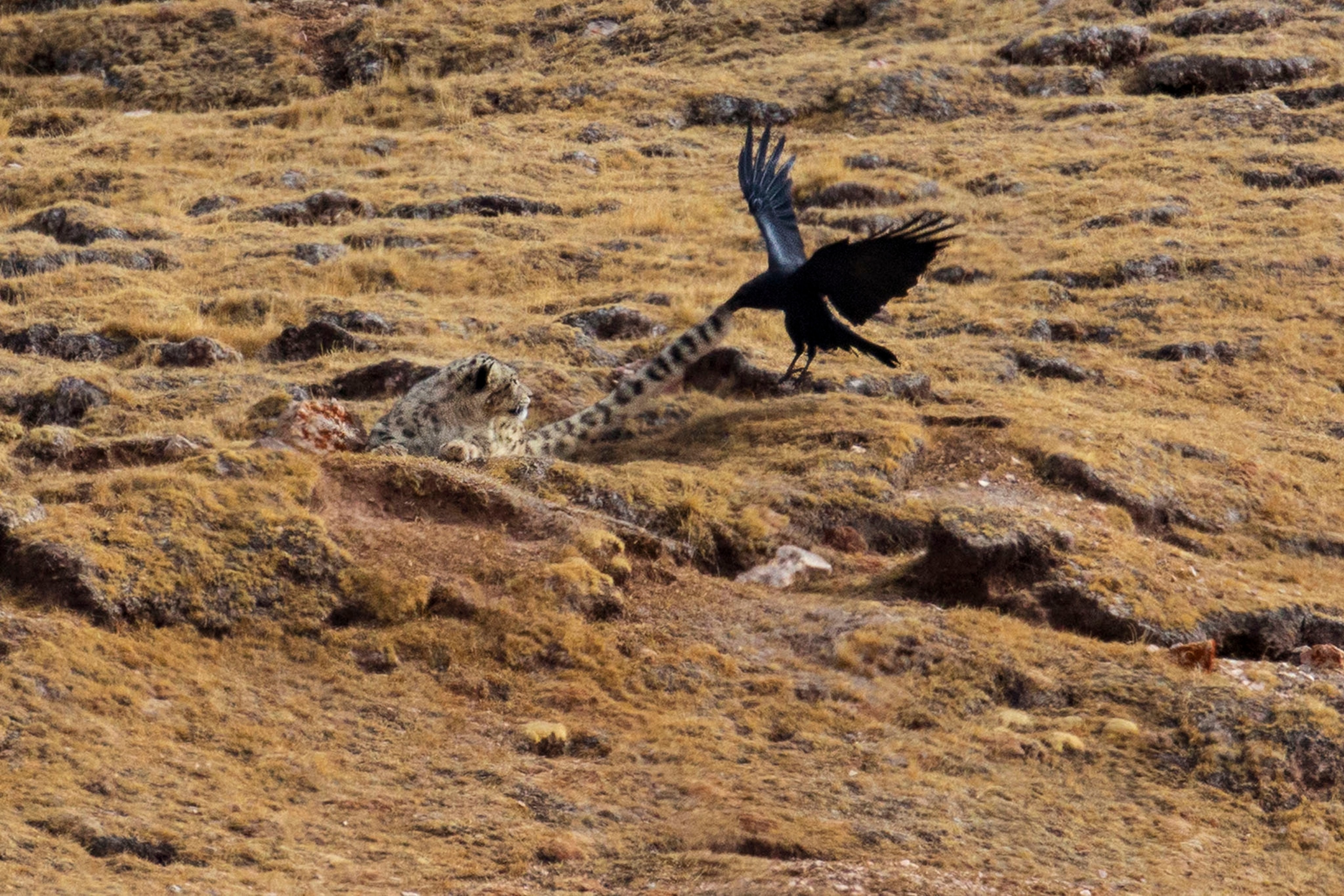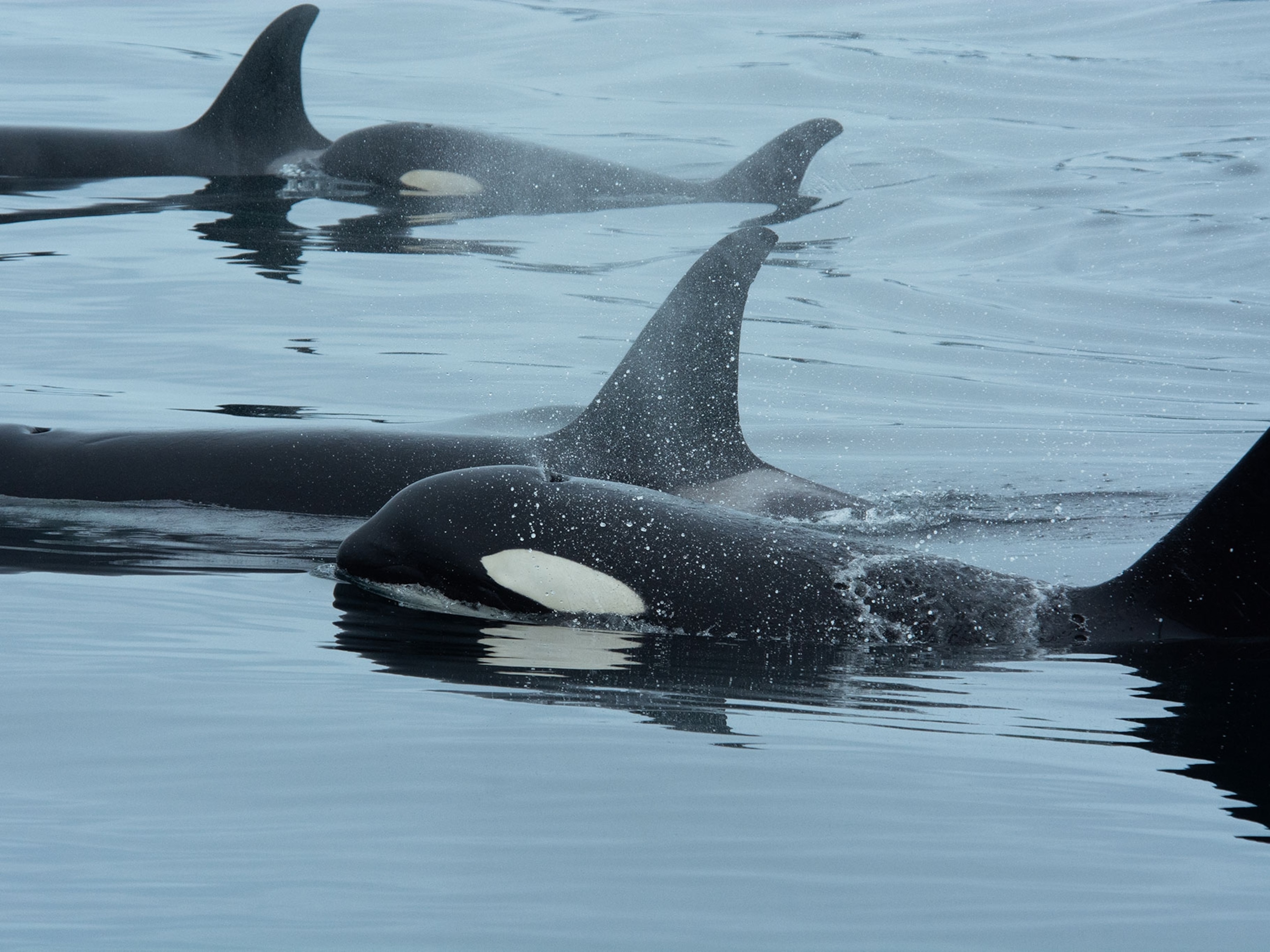Rare Snow Leopard Kills Sheep in First-Ever Photographs
In November, a photographer got quite a shock while trekking the Tibetan Plateau in western China.
The sudden movement caught Jed Weingarten’s eye.
A streak of brown on brown cut through the still, frigid morning on the Tibetan Plateau in China’s Szechuan Province, where the American photographer had been trekking in search of deer and sheep.
He didn't expect to see a snow leopard, but right there in front of him was one of the world’s rarest and most mysterious big cats.
Even more surprising, the predator was rolling a Himalayan blue sheep down a steep, rocky cliff, a strategy that ultimately led to a hard-earned meal. (Read more about snow leopards in National Geographic magazine.)
“I was totally overcome with excitement. It’s so rare and such an opportunity,” says Weingarten, the first photographer to capture a snow leopard killing a blue sheep.
Tough Shot
A frequent traveler to the Himalaya and Tibetan Plateau, Weingarten has spent months of his life combing the rough terrain in search of the snow leopard—but to no avail.
That’s not surprising, since the cats are extraordinarily well camouflaged and tend to spend their time among inaccessible cliffs, says Peter Zahler, leader of the Snow Leopard Program at the Wildlife Conservation Society.
For his November 2017 expedition, Weingarten was filming a documentary series on the white-lipped deer rut.
Looking for the deer through a spotting scope, Weingarten saw the snow leopard stalking a group of blue sheep. He immediately moved toward a cliff where the leopard would likely chase the prey.
“We moved up slowly, so we wouldn’t scare it. But with 50 pounds of gear at 15,000 feet, slow is pretty much the only way I could move anyway,” Weingarten says, laughing.
Agile Cat
The snow leopard’s hunt that day was unsuccessful, but Weingarten knew that with an empty belly and ample prey nearby, the big cat wouldn’t have gone far.
His team returned to the same spot the next day before dawn and waited. They didn’t have long until the snow leopard again went after a herd of blue sheep. (Read "One Snow Leopard Needs a Protected Range Bigger Than Aruba.")
“My camera shutter was just going nonstop,” Weingarten says.
At first, he thought the leopard and sheep were rolling together down the slope, but when Weingarten reviewed the photographs and video footage, he realized the leopard pushed the sheep down, leaping back and forth to disorient the animal until it could make the final kill.
“It was an amazing display of agility and athleticism,” he says.
This new insight into hunting manuevers is one of the reasons that Zahler finds Weingarten’s encounter so exciting. (See more amazing photographs of snow leopards.)
“These are great photos, and any information we can get is better than what we’ve got,” says Zahler, who adds that scientists could return to that location to study the predators.
Felines in Decline
Camera traps have helped researchers gather some information about snow leopards, but even some of the most basic information, such as the total number of animals in the wild, remains unclear.
Zahler says that the wild population is likely between 4,000 to 10,000 individuals.
In 2017, higher population estimates caused the International Union for Conservation of Nature to upgrade snow leopards from endangered to vulnerable to extinction.
It’s a positive sign, Zahler said, but the future of these little-seen felines is far from secure. (Related: "More Snow Leopards Poached, Even as Bold Plan Fights Decline.")
“Their numbers are still going down. They’re just not going down as quickly."








